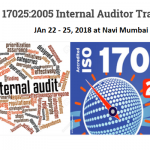ISO 13485: 2003
ISO 13485: 2003 specifies requirements for a quality management system where an organization needs to demonstrate its ability to provide medical devices and related services that consistently meet customer requirements and regulatory requirements applicable to medical devices and related services.
The key word is consistently. Consistency helps to minimize errors.
The consistency be achieved through documentation of processes, incorporating quality control into every step of the production process and utilizing an automated quality management system.
The primary objective of this international standard is “to facilitate harmonized medical device regulatory requirements for quality management systems.” The standard is based on eight quality management principles: customer focus, leadership, involvement of people, process approach, and system approach to management, continual improvement, fact-based decision-making and mutually beneficial supplier relationships.
Revised in 2003, ISO 13485: 2003 shifts the importance from the role of quality inspection at the end of production to responsibility for quality control throughout every aspect of production and builds quality assurance procedures into the process itself. The revised standard focuses on how well the organization assesses and manages risk, identification and traceability, and cleanliness of the work environment.
ISO 13485: 2003 is a tool that reassures consumers that any hazards to them with the medical devices they may come in contact with are being managed through a systematic approach to making the products safer for use.
The key to this standard is a quality management system that builds the key themes of the standard into its processes from the very beginning. As a result, medical device manufacturers can realize better product quality, cost-effectiveness and time to market.
Medical device manufacturers need quality management systems to ensure quality, standardize manufacturing and ensure that their devices are safe for the end-user.
Consistency can be achieved through documentation of processes, incorporating quality control into every step of the production process and utilizing an automated quality management system.
ISO 13485: 2003 shifts the importance from the role of quality inspection at the end of production to responsibility for quality control throughout every aspect of production and builds quality assurance procedures into the process itself.
Processes and procedures must be established, controlled and documented that ensures product safety and conformity to print and that meet all regulatory requirements. ISO 13485 states that it is the responsibility of management to promote the awareness of regulatory standards.
For Media and PR
Contact:-
Ajanta Biswasajanta@uaeiso.com
Sterling International FZE
Level 6,Office 605- The Fairmont, Sheikh Zayed Road,
PO Box 27363, Dubai, United Arab Emirates,
Mobile: +971505842597
Office Phone No + 97144558677






